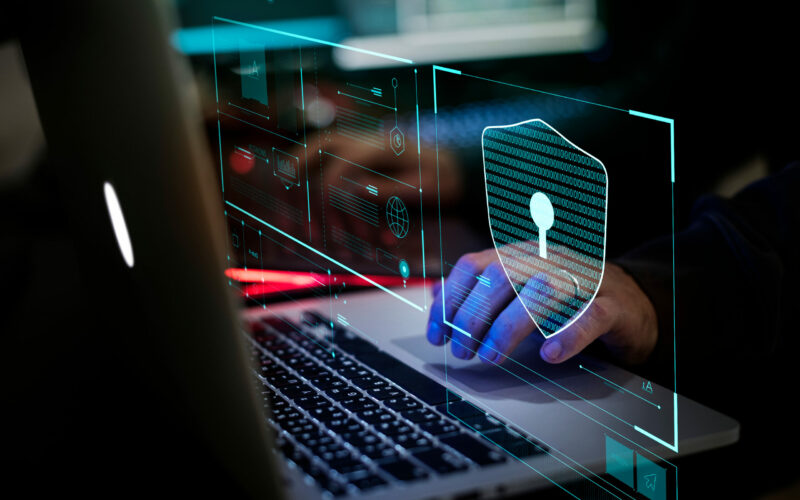Cybercriminals are increasingly enticed by the volume of sensitive data law firms maintain. They thrive not just on the sensitivity of the data but also on the scope and detail of data they can dig up from a successful breach on a single firm, especially if it’s from a large firm. When breaches occur, your law firm is put in a vulnerable position: to comply with the cyber criminals’ demands and lose money or risk having their clients’ confidential data out in public.
Confidentiality is a core principle of the legal profession. Unfortunately, as cybercrime rises, it jeopardizes the client’s privacy of sensitive information and a firm’s reputation. In addition, law firms might have additional compulsory obligations under HIPAA to protect certain types of data, such as personal health information. Failure to do so puts them at risk of legal and regulatory consequences.
The Landscape of Cyber Threats
No law firm can afford a data breach regardless of its practice area, size, or location. However, despite the heightened awareness of these risks, many law firms still need to catch up on industry best practices. To stay ahead of the attackers, law firms must remain up-to-date with the latest cyber security threats and trends. Cybersecurity threats to law firms can be both direct and indirect and primarily include:
Phishing Attacks
Are an attempt by cybercriminals posing as legitimate institutions to try and trick users into sharing sensitive information or personal data or taking actions that make them vulnerable to a cyber-attack. Phishing is often done through emails, text messages, phone calls, or websites designed to deceive or manipulate users into sending information or assets to the wrong people. For example, your client’s email is janedoe@email.com, but criminals contact you through the email janedoe1@email.com in an attempt to make them look legitimate.
Law firms can protect themselves and their information from phishing attacks using secure passwords and multi-factor authentication.
Ransomware Attacks
Ransomware is malware that infiltrates a firm’s network and encrypts or seizes its information until a ransom is paid. The attack can come in multiple forms, often by unknowingly clicking a malicious link or downloading an infected file. Moreover, while the goal of a ransomware attack is usually extortion, there is still no guarantee that paying will release hold of your files or prevent data leakage. During such an attack, time is of the essence to ensure quick response and avoid crippling losses, both monetary and proprietary. It is, therefore, essential to have a playbook on how to recover from ransomware attacks that details all the steps you need to take next.
Data Breaches
Law firm data breaches often happen through malware, phishing attacks, hacks, or email spoofing. According to the American Bar Association Legal Technology Survey Report of 2022, 27% of law firms report having experienced a security breach at some point. Law firms have an ethical and fiduciary responsibility to protect their client’s information. A breach not only leads to a loss of customer confidence but also damages the reputation of a law firm. Take the example of the 2016 Panama Papers hack, where Panama-based firm Mossack Fonseca lost 2.6 Terabytes of data, costing the firm its reputation to date.
Insider Threats
Insider threats refer to employees who intentionally or unsuspectingly compromise your cyber security. The hybrid working environment has opened up multiple entry points for potential attackers. If employees, for example, are careless with their passwords, bad actors can gain easy access to sensitive data.
Best Practices for Cybersecurity in Law Firms
How should you optimize your cyber security approach and safeguard your law firm’s data against cyber criminals? As technology evolves, cybercriminals are also becoming sophisticated, making it increasingly challenging to protect your business. However, once you understand that cybersecurity is a continuous process, you can embrace an effective holistic approach that takes into account the following:
Employee Training and Awareness
Cybersecurity is not just the responsibility of your IT team. All employees must be aware of the cyber risks they may encounter in their various roles. The first step towards cybersecurity starts with knowledge. Create a cyber situational awareness (CSA) highlighting your critical assets, common threats, and how to respond to those threats. Training will also help employees learn to recognize the signs of cyber threats like ransomware and how to avoid them. Training needs to be ongoing to stay on top of the best practices, even if you rely on managed IT services for law firms.
Multi-Factor Authentication
A good password is your first line of defense against an attacker. Consider all the services and systems your law firm relies on and ensure that strong, complex passwords protect them. To get people to use secure passwords, make it more convenient by employing multi-factor authentication (MFA). When MFA is enabled, users must provide two authentication factors to access a system.
When MFA is enabled, an attacker cannot access your data even if they have a password because they still require additional credentials like biometrics, SMS codes, USB keys, or PIN to get access.
Regular Software Updates
Outdated software and operating systems can present vulnerabilities attackers may exploit to access your systems. Updating software fixes this by optimizing performance and fixing bugs. Also, consider regularly adding patches to your system to reduce security gaps.
Outsource Managed IT Services
Outsourcing for third-party assistance for IT services for law firms is a conventional method for filling the gaps within your IT team—allowing your firm, regardless of its scope, to incorporate services and experts into its processes and improve efficiency. Leveraging managed law firm IT solutions has the following benefits:
Cost-Effectiveness
Outsourcing law firm IT services to a managed service provider is more cost-effective than maintaining an in-house IT department. You get to avoid upfront costs associated with purchasing and maintaining IT infrastructure, and you only access required services at a predictable and managed cost. Outsourcing is also an opportunity to maximize expert help that you would otherwise not be able to afford with an in-house team. This improves efficiency and security and allows your firm to remain competitive by focusing on other core functions.
Expertise and Compliance
The legal industry is highly regulated, meaning that there are a lot of laws and compliance requirements you must meet. Managed service providers can help with compliance management by conducting comprehensive security assessments and audits on your firm’s IT infrastructure and system. They are also scalable, which allows them to grow along with your firm and swiftly respond to changes in procedures and regulations.
Focus On Core Competencies
Managed IT services will improve your firm’s productivity by ensuring your systems and networks are always available and running. They have a faster response time, with most offering round-the-clock support, providing access to specific skill sets your firm requires. Moreover, they also provide you with the latest technology on the market.
Risk Mitigation
Outsourcing IT services can help your law firm fill skills that can make you vulnerable without the associated cost of hiring an in-house employee. It also brings in deep experience regarding potential risks and their solutions. This ability to benefit from outside expertise is a crucial advantage of outsourcing. As IT services experts, they can streamline your operations and ensure that your systems are protected more effectively than if you were doing it on your own.
Tailored Solutions for Your LA Law Firm
Managing cybersecurity risks is an ongoing challenge. However, many law firms lack the internal skills, knowledge, and resources to facilitate comprehensive cybersecurity. While you can’t guarantee that a breach won’t occur, you can optimize your law firm’s cybersecurity approach to drastically minimize the chances of it happening.
We Solve Problems IT provides effective IT solutions tailored for organizations based in Los Angeles. We simplify IT solutions to streamline your workflow and productivity. Contact us today to learn more about our managed IT services.


